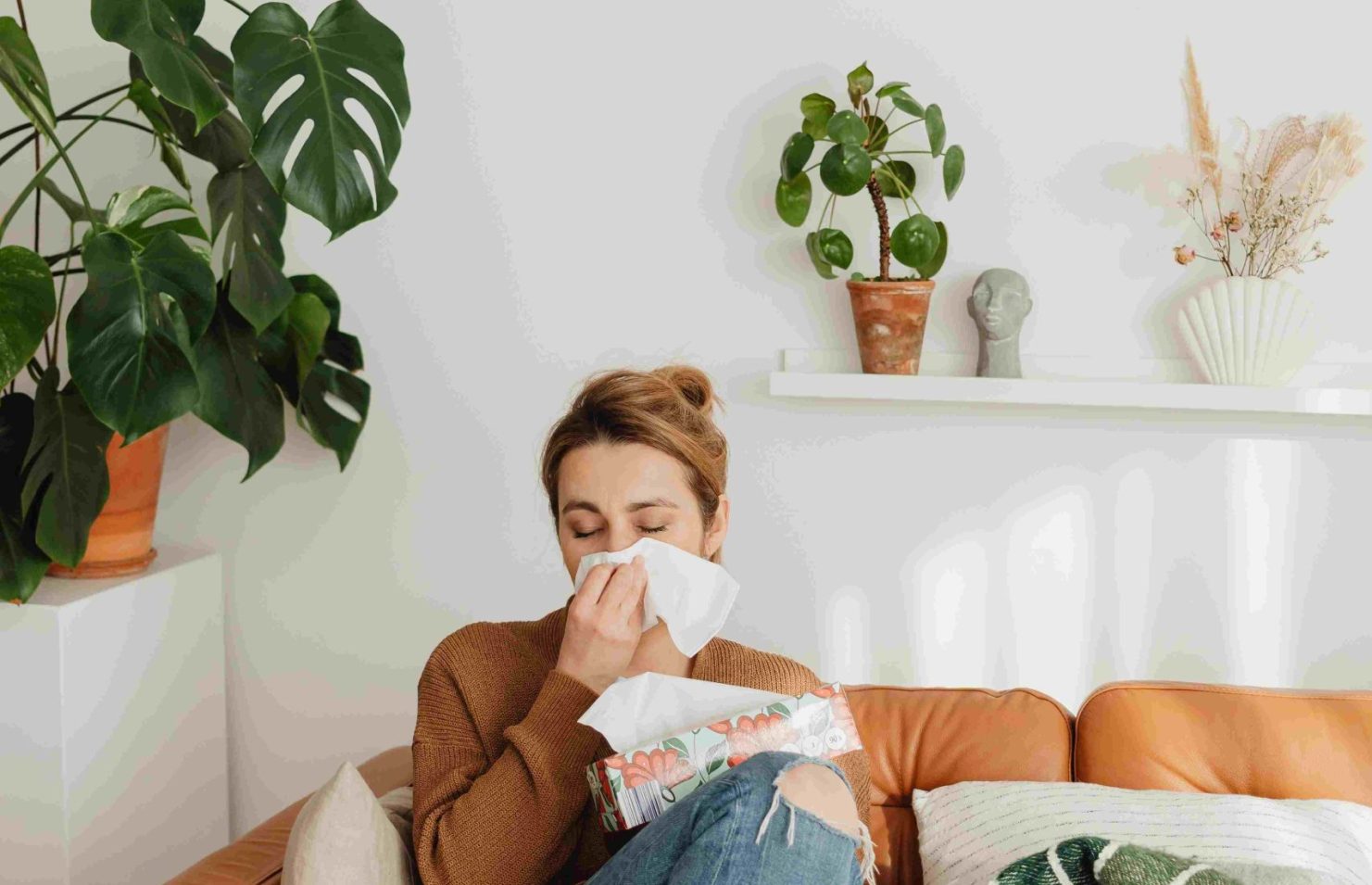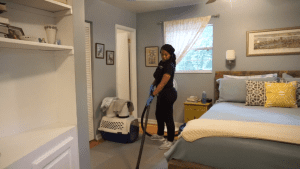Living with allergies in the Atlanta area in particular can be challenging, especially with the high pollen levels and environmental triggers that affect respiratory health. Maintaining a clean and allergy-friendly home environment becomes essential to reduce allergens and promote better health. In this blog post, we will explore effective cleaning methods, products, and strategies recommended by experts to help you create a healthy home and find relief from allergies.
Understanding Allergens: The Culprits Behind Allergies
Understanding common allergens found in homes is essential for combatting them and creating an allergy-friendly environment. Dust mites, pet dander, pollen, mold spores, and cockroach droppings are common culprits. These allergens can cause mild to severe respiratory reactions. Cleaning strategies for allergies backed by experts can effectively combat these allergens and create a healthier home environment.
Develop a Cleaning Routine
Consistency is key to keeping allergens at bay. Develop a regular cleaning routine that includes tasks such as dusting, vacuuming, and washing bedding. Aim to clean at least once a week, focusing on areas where allergens accumulate, such as carpets, upholstery, and curtains.
A regular cleaning routine is not just about fighting allergies; it also contributes to a healthy living space. Cleaning your home regularly eliminates not only allergens but also other potential irritants like bacteria, viruses, and mold spores. This promotes better indoor air quality and reduces the risk of respiratory infections and other health issues. A clean and organized home also fosters a sense of calm and well-being, positively impacting your mental health.
Use HEPA Filters and Optimize Your Vacuuming Technique
Using HEPA filters and optimizing your vacuuming technique are essential steps in reducing allergens in your home. By investing in vacuum cleaners equipped with HEPA filters, you can effectively prevent microscopic allergens and particles from being released back into the air. To further optimize your vacuuming technique:
- Pay close attention to areas where allergens tend to accumulate, such as carpets, rugs, and upholstered furniture. These areas are prone to harboring dust mites, pet dander, and other allergens.
- Vacuum thoroughly and slowly, using overlapping patterns to ensure maximum removal of allergens. Move the vacuum in both forward and backward motions, covering the entire surface area.
- Utilize attachments and crevice tools to clean hard-to-reach areas, corners, and crevices where allergens can accumulate.
- Consider wearing a dust mask while vacuuming to avoid inhaling airborne particles, especially if you are particularly sensitive to allergens.
Minimize Dust and Clutter
Dust is a common allergen and can aggravate respiratory symptoms. Minimize dust accumulation by keeping your home clutter-free. Regularly declutter and organize your living space, as fewer items mean fewer surfaces for dust to settle. If you have carpets, make sure to vacuum them thoroughly and regularly to remove trapped allergens. For hard-to-reach areas, use attachments to clean baseboards, corners, and crevices where dust tends to accumulate.
In homes with a combination of carpets and hardwood floors, pay extra attention to proper maintenance. While hardwood floors are generally easier to clean and don't trap allergens as much as carpets, it's still important to keep them free of dust. Regularly sweep or vacuum the floors using a soft brush attachment to prevent the buildup of dust and allergens. Additionally, damp mop the hardwood floors using a mild cleaning solution suitable for the specific type of wood.
Wash Bedding and Upholstery Frequently
Bedding and upholstery can harbor allergens such as dust mites and pet dander, which can trigger allergies and respiratory symptoms. Regularly washing and cleaning these items is crucial for maintaining an allergy-friendly home environment. You can effectively clean your bedding and upholstery by:
a) Wash Bedding in Hot Water: Wash your sheets, pillowcases, and blankets in hot water at least once a week. Hot water helps to kill dust mites and remove allergens effectively. Set your washing machine to a temperature of 130°F (54°C) or higher to ensure the best results. If you have allergies, it's also recommended to wash your pillows in hot water to eliminate dust mites and allergens.
b) Use Allergen-Proof Covers: Consider using allergen-proof covers on your mattresses, pillows, and duvets. These covers are specially designed to provide an additional barrier against dust mites and allergens. They are typically made of tightly woven fabric that prevents allergens from penetrating the bedding, keeping you protected while you sleep. Remember to wash these covers regularly following the manufacturer's instructions.
c) Vacuum Upholstered Furniture: Upholstered furniture can accumulate dust, pet dander, and other allergens. Regularly vacuum your upholstered sofas, chairs, and cushions to remove surface allergens. Use a vacuum cleaner with a HEPA filter and upholstery attachments to thoroughly clean all surfaces. Pay close attention to crevices, seams, and under cushions where allergens can easily accumulate.
d) Steam Clean Upholstery: For a deeper clean, consider steam cleaning your upholstered furniture. Steam cleaning is an effective method for removing deeply embedded allergens and dirt. It uses hot steam to sanitize and refresh the upholstery without the need for harsh chemicals. If you choose to steam clean your upholstery, make sure to follow the manufacturer's instructions and test a small, inconspicuous area first to ensure compatibility with your furniture fabric.
Keep Indoor Humidity in Check
Excessive humidity can contribute to the growth of mold, which is a common allergen that can trigger respiratory symptoms. Apart from the cleaning strategies for allergies that are available, maintaining appropriate indoor humidity levels is essential to create an allergy-friendly home environment. To help keep indoor humidity in check:
a) Maintain Humidity Below 50%: Aim to keep indoor humidity levels below 50%. High humidity provides a favorable environment for mold to thrive. You can monitor humidity levels using a hygrometer, which is readily available at hardware stores or online. If humidity levels exceed 50%, it's time to take action to reduce moisture.
b) Use Dehumidifiers: In areas prone to high humidity, such as basements and bathrooms, consider using dehumidifiers. Dehumidifiers work by extracting excess moisture from the air, helping to maintain optimal humidity levels. Empty and clean the dehumidifier regularly to prevent mold growth within the unit.
c) Fix Leaks Promptly: Water leaks can contribute to increased humidity levels and create a breeding ground for mold. If you notice any leaks in your plumbing, roof, or windows, fix them promptly to prevent moisture from accumulating. Regularly check areas prone to leaks, such as under sinks, around windows, and in the basement, to catch and address any issues early.
d) Ensure Proper Ventilation: Good ventilation is crucial in maintaining optimal humidity levels. Ensure proper airflow throughout your home by using exhaust fans in bathrooms, kitchens, and laundry rooms. Open windows and doors whenever possible to promote air circulation. Consider using ventilation fans or opening a window while cooking or showering to reduce excess moisture.
Choose Allergy-Friendly Products
In regards to cleaning strategies for allergies in your home, selecting the right products is crucial, especially for individuals with allergies. Follow these tips to choose allergy-friendly cleaning products and alternatives to harsh chemicals:
a) Look for Allergy-Friendly or Hypoallergenic Labels: Check for labels indicating that cleaning products are allergy-friendly or hypoallergenic. These formulations are designed to minimize irritants and allergens, making them suitable for individuals with allergies. They are often free of common triggers like fragrances, dyes, and harsh chemicals.
b) Read Ingredient Lists: Take the time to read the ingredient lists of cleaning products. Avoid those containing known allergens or irritants such as ammonia, bleach, and strong fragrances. Opt for products that use natural or plant-based ingredients, which are usually milder and less likely to cause allergic reactions. Common natural alternatives include vinegar, baking soda, lemon juice, and hydrogen peroxide.
c) DIY Cleaning Solutions: Consider making your own allergy-friendly cleaning solutions using simple pantry ingredients. Combine vinegar and water for an effective all-purpose cleaner. Use baking soda as a gentle scrub for sinks, tubs, and toilets. Lemon juice mixed with water can remove stains and freshen surfaces.
d) Test Products in Small Areas: Before using a cleaning product on a large or delicate surface, test it in a small, inconspicuous area first. This ensures the product doesn't cause adverse reactions or surface damage. If you experience signs of allergies or irritation, discontinue use and try an alternative product.
e) Proper Ventilation: Maintain proper ventilation while cleaning, regardless of the products you use. Open windows or use fans to allow fresh air circulation. Ventilation helps dissipate fumes or airborne particles, reducing the risk of respiratory symptoms.
Experience Relief with Sponge & Sparkle's Expert Cleaning Services
Essentially, eliminating airborne allergens is a direct effect and by-product of effective cleaning. Sponge & Sparkle, a trusted cleaning service in the Atlanta area, understands the unique challenges of living with allergies and can help you achieve an allergy-friendly home. With these tips and cleaning strategies for allergies, you can create a clean and allergy-friendly home environment that promotes better respiratory health for you and your family.
Consult with us today to commence expert cleaning by calling (404) 633-9652 or request a free estimate.


